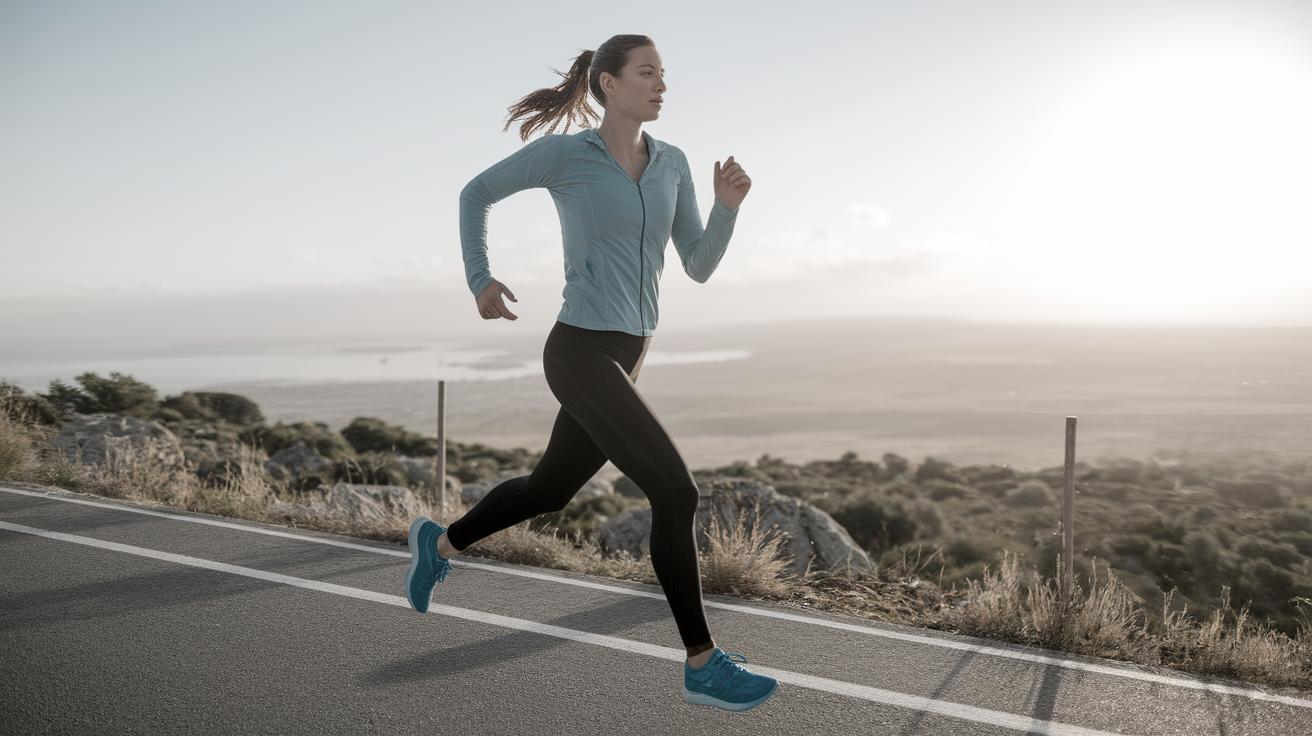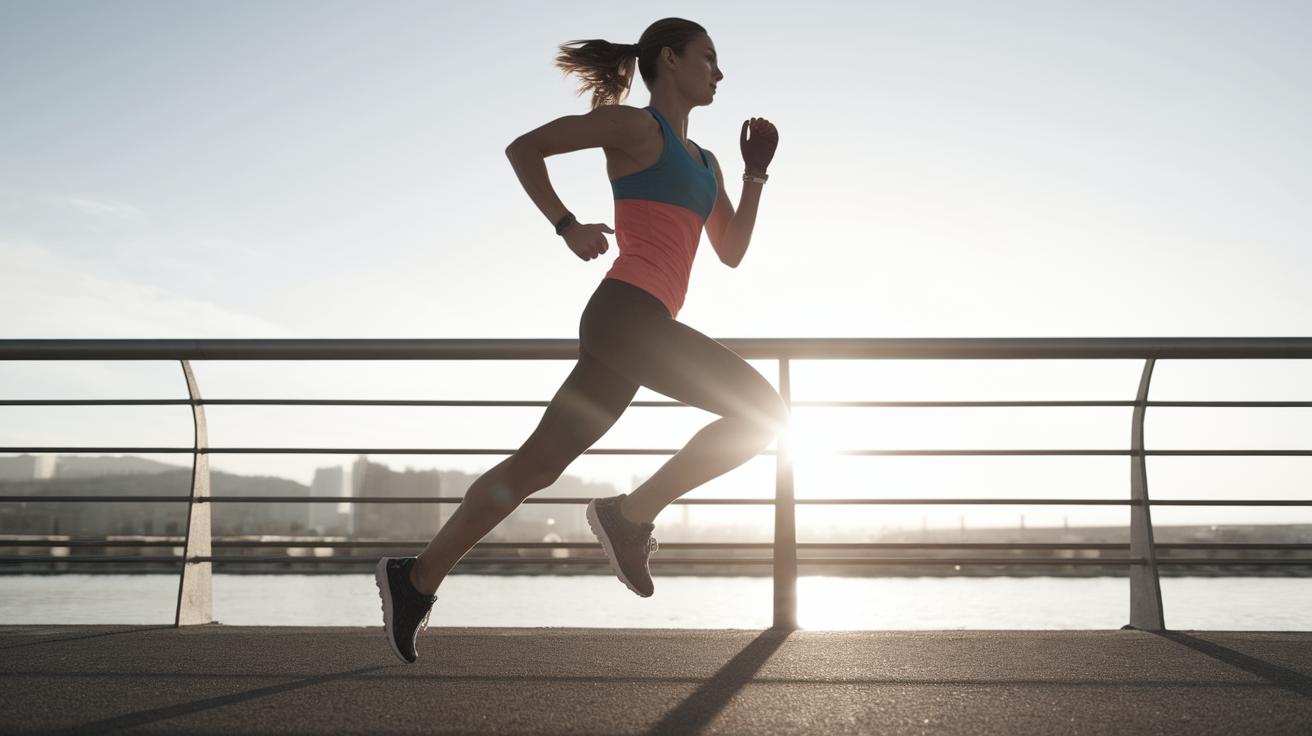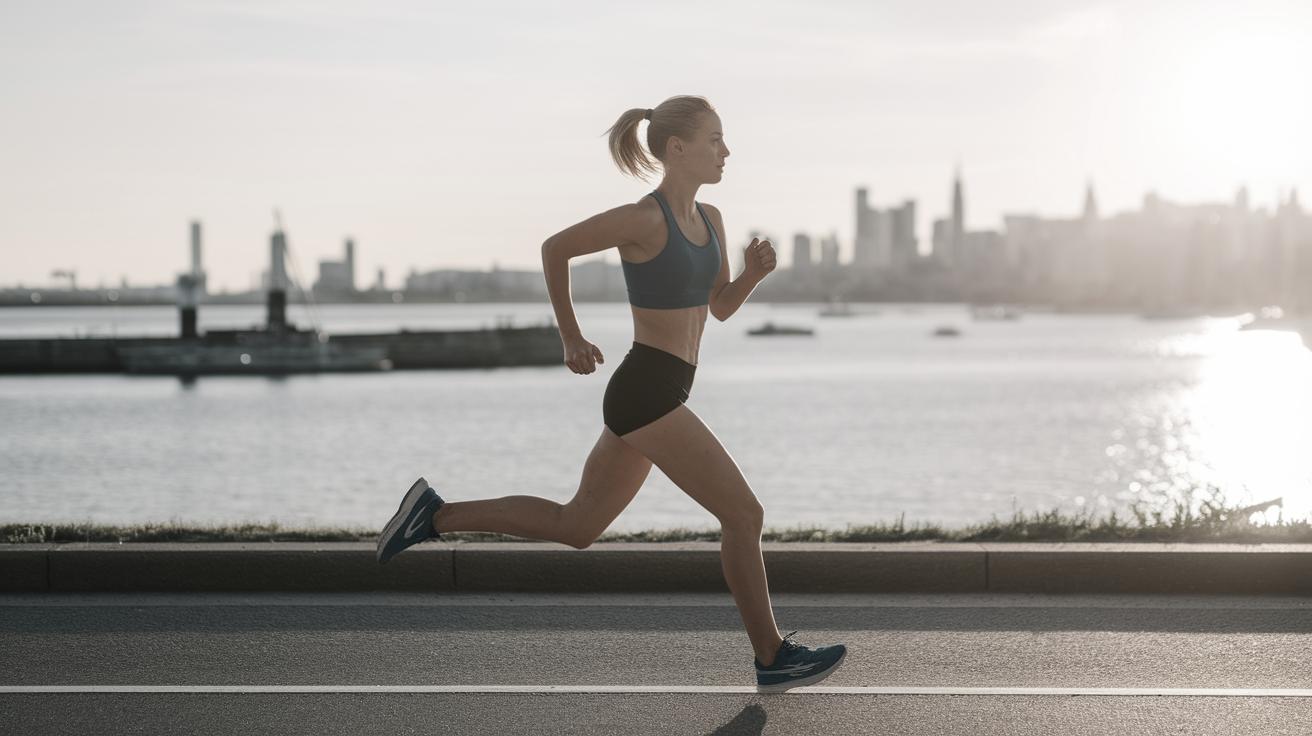How to Choose the Right Running Clothes
Whether you’re a seasoned marathoner or a casual jogger, the right running gear can make all the difference in your performance and comfort. This guide will walk you through the essentials, from selecting the perfect running shoes to picking out functional and breathable attire. We’ll also explore additional gear that can enhance your running experience, such as sports watches and hydration solutions. Moreover, understanding what to avoid wearing can save you from discomfort and potential injuries. By the end of this article, you’ll be equipped with the knowledge to refine your running wardrobe, ensuring each run is as enjoyable and efficient as possible.
Running Shoes
Features to Look for in Running Shoes
The cornerstone of your running outfit is your shoes. It’s important to select a pair that fits well and supports your running style. Look for features such as good arch support, a cushioned sole, and a snug but comfortable fit. Avoid shoes that are too tight as they can cause blisters and discomfort.
Breatheability is another key feature. Shoes constructed with mesh fabrics and ventilation help keep your feet cool and dry. Consider the shoe’s weight as well; lighter shoes typically enable faster running, although more cushioning may be required for longer distances or rugged terrains.
Running Clothes
Running-Specific Socks
Often overlooked, socks play a critical role in your running ensemble. Running-specific socks, usually made from synthetic fibers, wick away moisture more effectively than cotton. This reduces friction and the potential for blisters.
Some socks offer additional arch support or extra padding in high-impact areas. For longer runs or trail adventures, consider socks that provide some compression, enhancing blood circulation and reducing muscle fatigue.
Technical Running Clothes
Technical running clothes are engineered to improve your performance. Materials such as polyester, nylon, and spandex are preferred for their moisture-wicking properties, keeping your skin dry during intense activities.
Consider the climate and your personal comfort when selecting running attire. In hotter climates, look for clothing with UV protection and ventilated designs. For cooler temperatures, layering with a breathable base and a weather-resistant outer layer is crucial.
Supportive Sports Bras
For women, a supportive sports bra is as vital as a good pair of running shoes. Look for bras that offer support, breathability, and comfort. They should provide a snug fit without being too tight, with moisture-wicking fabrics to manage sweat.
A well-fitted sports bra reduces movement and provides the necessary support to avoid discomfort or injuries during runs. Experiment with different styles and brands to find one that offers the best combination of support and freedom of movement.
Other Features to Look For in Running Clothes
In addition to moisture-wicking and breathable materials, consider clothes with reflective elements for safety during low-light conditions. Convenient pockets can also be beneficial for storing small items such as keys or energy gels.
Antimicrobial properties are another factor to consider, as they help reduce odor build-up, keeping your gear fresher for longer. Finally, ensure your clothing allows for a full range of motion to prevent any restriction during your runs.
Other Running Gear
Sports Watch
A reliable sports watch can be an invaluable tool for tracking your running statistics, such as distance, speed, and heart rate. Many modern sports watches offer GPS capabilities, providing accurate tracking of your routes and performance metrics.
Choose a watch that complements your running goals, whether it’s a basic tracker for time and distance or a more sophisticated model offering advanced features like VO2 max measurements or recovery insights.
Running Belt
A running belt is an ideal solution for carrying small personal items without compromising your comfort. Look for a lightweight, adjustable belt with secure storage compartments for essentials like your phone, keys, and energy gels.
Some belts come with water bottle holders, which can be a convenient way to stay hydrated on longer runs. Ensure the belt fits snugly around your waist to prevent it from bouncing while you run.
Phone and Apps
Your phone can be a valuable running companion, offering access to various apps that enhance your training. From GPS route tracking to music streaming, the right apps can boost your motivation and provide helpful insights into your progress.
Look for apps that align with your goals, whether it’s basic tracking or access to curated running programs and community challenges. Consider investing in a good armband or phone holder for easy access while on the move.
Sun Protection
Protecting your skin from harmful UV rays is crucial during outdoor runs. Opt for clothes with built-in sun protection and consider accessories such as hats, sunglasses, and sunscreen specifically designed for sports activities.
Sunscreen should be sweat-resistant and non-greasy, providing adequate coverage without interfering with your running routine. Protective eyewear can shield your eyes from glare, keeping you comfortable in bright conditions.
Water
Staying hydrated is vital for running performance and safety. There are various hydration solutions available, from handheld bottles to hydration vests. Choose one that aligns with the length and intensity of your runs.
For short runs, a simple water bottle may suffice, while longer distances might require a hydration pack or belt. Experiment with different options to find what works best for your needs without disrupting your natural running motion.
What Not to Wear During a Run
100% Cotton
Avoid wearing 100% cotton during runs, as it retains moisture, leaving you feeling damp and uncomfortable. This can lead to chafing and increased irritation, detracting from your running experience.
Instead, opt for moisture-wicking synthetic fabrics that efficiently draw sweat away from the body, keeping you dry and comfortable throughout your exertion.
Sweatpants
While cozy, sweatpants are generally too bulky and heavy for effective running. They can weigh you down and retain moisture, leading to discomfort and irritation.
Choose lightweight and breathable running tights or shorts instead. These allow for greater freedom of movement and better temperature regulation, improving your overall performance.
Heavy Layers
Layering is essential for regulating body temperature, especially in colder weather. However, avoid over-layering with heavy clothes that can restrict movement and cause overheating.
Select garments that are suitable for the weather conditions and can be easily adjusted or removed if the weather changes during your run.
Worn Out Shoes
Old or worn-out shoes can lead to injuries, as they lose their cushioning and support over time. It’s essential to replace your running shoes after approximately 300-500 miles of use, depending on your running style and the shoe’s construction.
Regularly inspect your shoes for signs of wear, such as fraying, compressed midsole, or uneven tread, to ensure they continue providing the necessary support and protection.
New Gear on Race Day
Avoid trying new gear on race day, as it might lead to unexpected discomfort or issues. Always test your equipment during training runs to ensure it fits well and performs as expected.
Familiarity with your gear—be it your shoes, clothes, or accessories—ensures confidence and comfort on race day, allowing you to focus on your performance rather than adjusting unfamiliar attire.
Final Thoughts
| Aspect | Essential Features | What to Avoid |
|---|---|---|
| Running Shoes | Arch support, cushioned sole, breathability | Worn out shoes, new shoes on race day |
| Running Clothes | Moisture-wicking fabrics, supportive bras | 100% cotton, heavy layers |
| Other Gear | Sports watch, running belt, sun protection, hydration | Excessive gear use without prior testing |
Enhancing your running experience begins with choosing the right gear. Understanding the essentials and avoiding common pitfalls equips you for success and enjoyment on the trail or track. With informed choices, every run becomes an opportunity to push boundaries and achieve new personal records.


